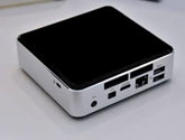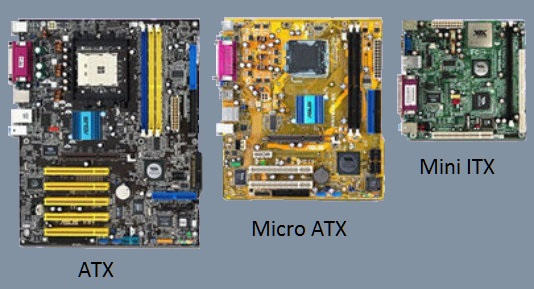


© Estwald ISI 2015 - 2025


Estwald’s
Information System Infrastructures

Motherboard
Motherboards, like graphics cards, are built by the same group of manufacturers and for the most part attempt to
distinguish themselves from the competition in the same ways. Unlike graphics cards, they are designed to work with specific
families of APUs/CPUs. Further, there are families of bridging chips associated with each family of APUs that offer low, medium,
or high numbers or quality of additional features such as PCI and PCIe slots, SATA connections, USB connections, audio chip,
and interface speeds.
Motherboards come in four basic sizes and a typical set of distinguishing features. The Next
Unit of Computing (NUC) motherboard is around 4”x4” and has the least features. In fact you can’t
even buy a NUC motherboard. One must buy a NUC that includes the motherboard, case, power
supply, APU, graphics port, Ethernet port, audio, and a few USB ports. Add laptop memory, a solid
state storage card, possibly a WiFi card and stir. Due to its size there is no expansion or upgrade
capability to its core components.
The mini ITX is about 6.5”x6.5” and adds a
graphics slot, two memory slots, and four SATA
controller ports for storage devices. Some come
with built-in WiFi. As long as additional card slots
are not required, this board can be used for most
workstation purposes from office applications to
high end gaming and graphic design. However,
due to its size which causes denser packing of
components, it is more expensive than a micro
ATX.
The micro ATX is approximately 9.5”x9.5”.
It has one graphics slot, two or four memory
slots, and one or two additional slots for specialty
cards. It is the cheapest type of motherboard for
two reasons. First it is not as densely populated
as the mini ITX so there are no design challenges requiring costly solutions. Second, it provides an adequate amount but not an
overabundance of features.
And finally there are the ATX and Extended ATX at roughly 12”x9.5” and 12”x10.5” respectively. Like the micro ATX they
are not densely populated but provide maximum flexibility by having an overabundance of additional features such as eight to
ten SATA ports for storage, two to four graphics slots, and three or four additional slots for specialty cards. They may also have
two Ethernet ports, eight to ten USB ports, and perhaps a fire wire port.

















